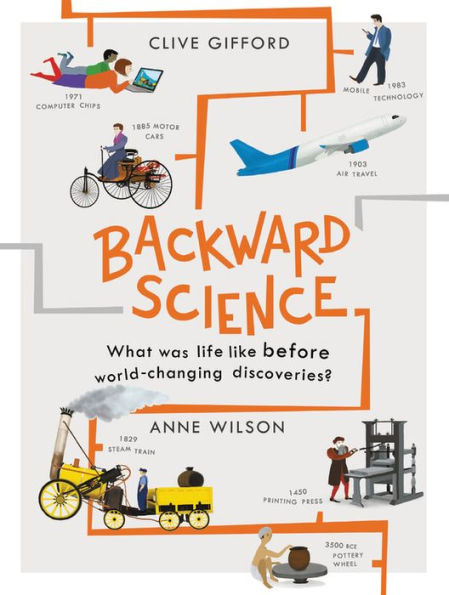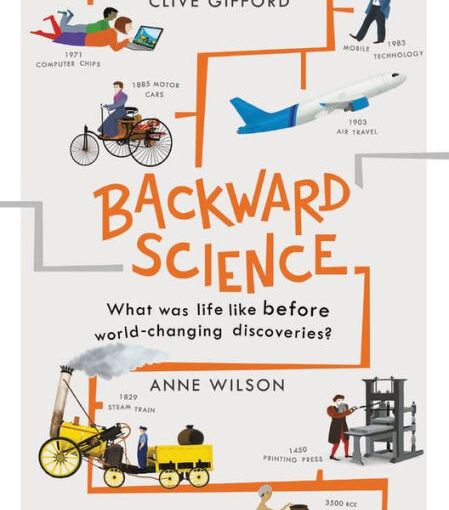Backward Science is reverse engineering’s brother, the two of them live at that house down the road with all of the car parts that are just outside of where you can see them. That way they can avoid the HOA penalties. That phrase also sound like something your parent might say after you create something. “That’s some backward science there”, dad would say as he’s trying to compliment you, but really wants the end product or creation thereof to be more polished. In this instance, Backward Science is the perfect name for a book that takes a look brief look back at how we lived, made stuff or got around before things were as modern as they are today.

At their core, every middle school student wants to learn. It’s only when they get around certain influences or when they don’t discover educational avenues, is that desire not fulfilled. Illustrated books like Backward Science are just the ticket that can feed middle school minds with history and STEM-minded facts that will spice up reports or motivate them to read more.
Even adults who are willing to sully their high brow reputation by reading their child’s book will learn something and have fun. While casually reading Backward Science I learned that Eastman Kodak invented the digital camera in 1975. It was an eight-pound monster that took 23-seconds to record a relatively small black-and-white picture. If you’ve ever broken your femur you have a Welsh surgeon names Hugh Owen Thomas to thank for paving the way towards it not being a life-threatening injury.
During WW I a broken femur led to an 80% chance of death. Thomas invented a splint that consisted of an iron frame with a canvas covering that went around the person’s leg. There are three other inventions that have helped the procedures required for today’s modern-day emergency treatments. Each of these blurbs is presented with six-eight accompanying sentences that describe the invention a how it impacted the greater picture.
Throughout the 64 pages of Backward Science we discover 29 different instances where something is presented and we’re invited to remember what it might’ve been like to live and experience it back then. Knowing what we know now, how would we actually deal with having to cross the Atlantic Ocean on a slow moving, dangerous ship instead of flying on a plane for six-hours? It looks at the scene as it was then, and presents four discoveries or procedures that were invented so that we can live today’s comfortable life.
All one needs to do is wonder what an operation would’ve been like without a Donkey Engine. That piece of work alone has saved millions of lives.
What’s great about Backward Science is that it presents its information is small, bite-sized chunks, and then leave you alone. It doesn’t pester you to read or learn more. But, but then the seed is planted and you can’t help but read a couple more blurbs. I love the fact that I don’t have to walk around horse poop in the street, if only I could read about the invention of the internal combustion engine. This book serves as curiousity food, leisure reading, and as reference material. Most impressively, is that because the book makes it fun to read it’ll suck in those reluctant readers or those who think that they don’t want to read about the arc lamp because it’s perilously close to science class. It is, but readers won’t care and will keep on reading.
Backward Science is by Clive Gifford with illustrations by Anne Wilson and on Quatro Publishing.
There are affiliate links in this post.





 Facebook
Facebook Twitter
Twitter Flickr
Flickr GooglePlus
GooglePlus Youtube
Youtube